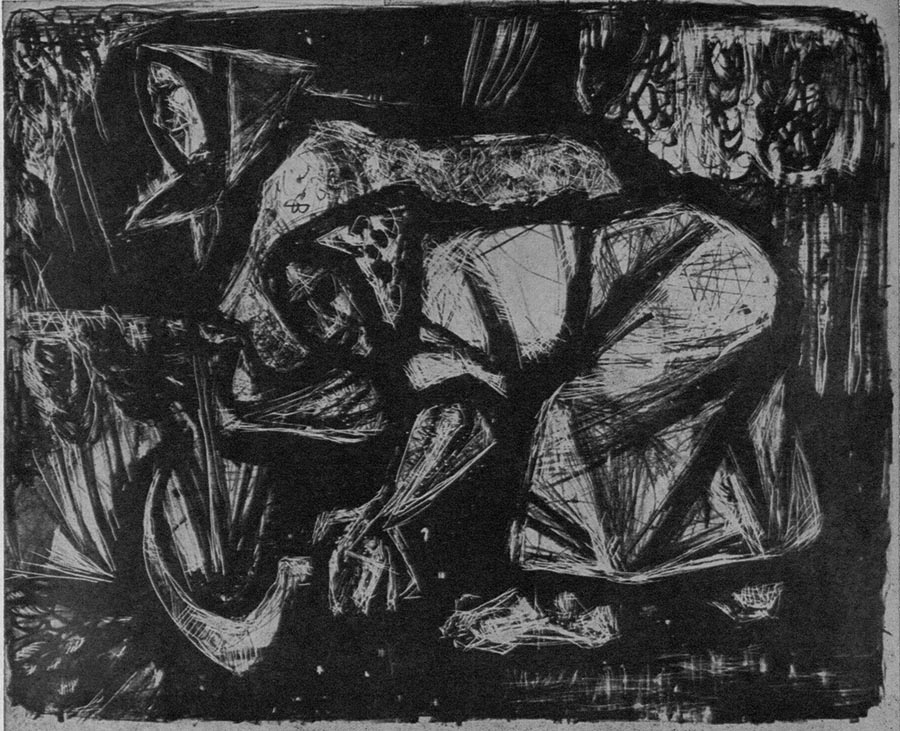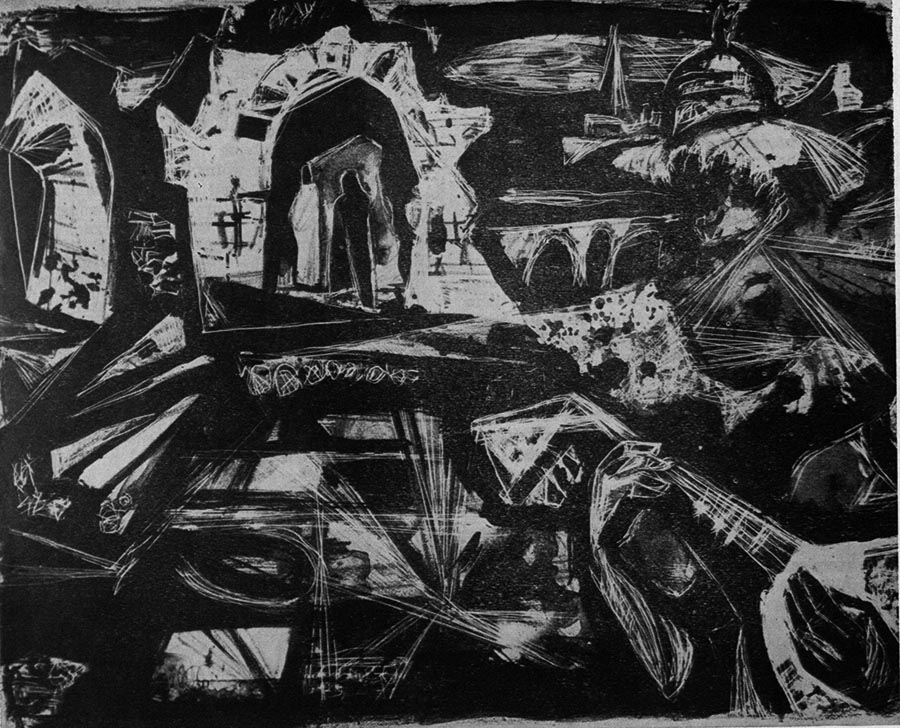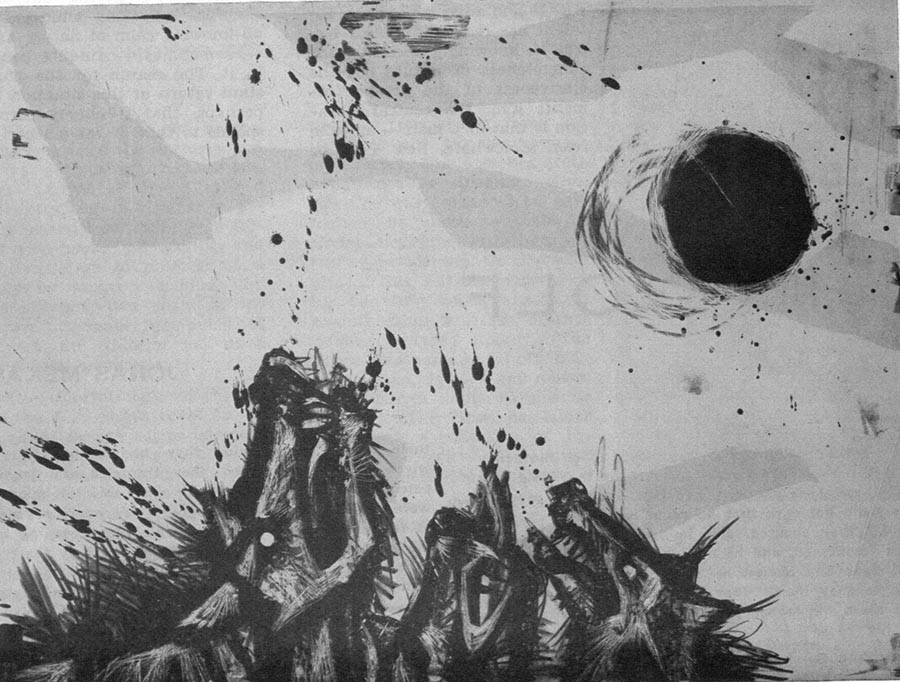
Managing Editor P. V. Vygantas
 |
www.lituanus.org |
|
Copyright
Š 1957 Lithuanian
Students Association, Inc.
June,
1957 No.2(11)
Managing Editor P. V. Vygantas |
|
ROMAS VIESULAS PORTRAIT OF A YOUNG ARTIST
PAULIUS JURKUS
PAULIUS JURKUS, a graduate of University of Vilnius, is an editor of Lithuanian newspaper "Darbininkas". He writes short stories, novels, poetry and articles on art and literature. His novel won the annual $1000 award in 1956, sponsored by "Draugas", a Lithuanian daily published in Chicago.
The graphic artist Romas Viesulas has occupied the most outstanding
position among the ycunger generation of Lithuanian painters.
Immediately after the war (1949), he graduated from the Ecole des Art*
et Metiers in Freiburg, Germany; visited Italy for further study, an Já
upon the receipt of a French scholarship, studied at the Ecole National
Superieure des Beaux Arts. He de-ve'oped and cultivated his creative
talent only af-t-r having come to the United States (1951). In th?
course of several years, he has done so much work, that now it would be
difficult to enumerate all (he exhibitions in which he has taken part.
He has become an active member of the community of American painters,
and won a whole number of prizes. His works are represented in private
collections and museums. He has also held two exhibitions of his works
in New York.
In a'l his lithographs, Viesulas with pleasure depicts man. His subjects are taken from everyday life and labor in the countryside, from Lithuanian folk songs, and from themes of the Holy Script. The artist's approach to his subjects is contemporary. He possesses some of the existentialist mood.
The world created by Viesulas is enveloped in great seriousness. What concentration and seriousness Is reflected in his working people even the working man playing the flute in his "Evening Song" is marked with the same seriousness. This is the hard life becoming manifest; this is the language of an exile who has lost his Motherland. Often, a sorrow and a melancholy mood can be discerned through this veil of seriousness. However, there are no tragic elements in Viesulas' work, and so, his world still contains hope and illusions colored in brighter hues.
His habits of composition also display his existentialist mood. It is typical of him to show one detail only and to express the whole theme of the work through it. For instance, the picture "At Pontius the Pilate" shows only the feet of the main characters Christ and the Pilate while the foreground is occupied by a woman's head. And by means of these details, making use of a variety of technical means, the artist obtains the whole tension and nobility of the scene. Or else, in "Birth of Christ," only the new-born Savior is visible, with the head of an ox and folded hands seen next to Him. The head of the ox and the folded hands convey all the earnestness and mystery of Christ's birth.
In depicting people, he often likes to omit the upper portion of their heads. Thus, in the excellent, we'l-balanced picture "The Daughter Has Been Given Away" such an omission creates a strange i '.usion of grandeur and breadth, and in "The Let-ier" on the contrary it strengthens the anguish of the maiden.
In reinforcing his main thought, he also distorts the primitive figures themselves, enlarging the proportions of their bodies. Thus, in "The Homeless," the legs are emphasized so strongly that they become heavy and coarse; but at the same time thsy are meaningful, since it was their legs that brought the exiles out from horror to freedom. Or e!se, in "The Harvest," the heaviness and the pain of lator are expressed through the hands and the heavy body.
An existentialist spirit is also reflected in his method of drawing, where an expressionist mood prevails, where the main outlines are emphasized in heavy pencil strokes. These coarse, primitive lines are strengthened even more by black areas. Viesulas knows how to handle their composition, how to unite them into a single whole, and how to make them rich in craftsmanship and true in their sincerity. Here he makes the widest use of the possibilities of lithographic technique; he draws many thin lines, weaves them into complex maze, puts spots of India ink. However, most characteristic of him are white scratches, which have the cuality of the sound of touched strings, and which dissipate the bleak mood of the pictures, strength-ering the leading thought. These lines sometimes turn into an abstract, irrational play.
For the most part he works in
black-and-white, but he has also created good many colored lithographs.

Harvest

Memories of Rome

Illustration for "The
Wolf"